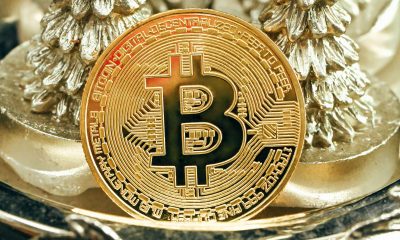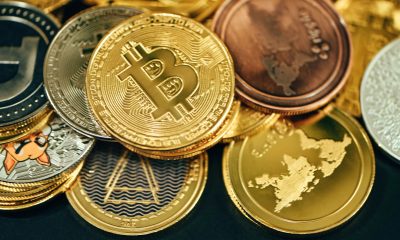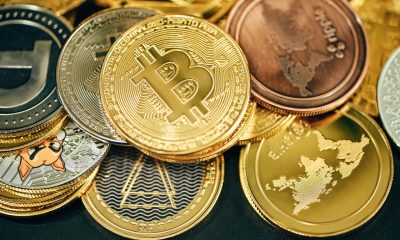Crypto
Stablecoins: Dollar Engine or Financial Time Bomb?
Stablecoins, once seen as crypto’s “boring” backbone, now spark fierce debate: drivers of global dollar dominance or systemic risk akin to 2008. With explosive growth to $280B, heavy Treasury ties, and projections of $1.2T by 2028, they could bolster the dollar—or trigger liquidity crises. Oversight, innovation, and regulation will shape their future.

Stablecoins are often considered the “boring” backbone of the crypto world—stable, predictable, and without the rollercoaster rides of Bitcoin or Ethereum. But behind their apparent simplicity, a heated debate unfolds: Are stablecoins a key to global dollar dominance or a ticking time bomb reminiscent of the 2008 financial crisis?
Explosive growth and close linkage with Treasuries
The stablecoin market has nearly doubled in size within a year and now stands at $280 billion. Most stablecoins, such as USDT and USDC, are backed by short-term US Treasuries. This close connection to Federal Reserve policy makes stablecoins a unique link between the crypto and fiat worlds.
Gracie Lin, CEO of OKX Singapore, emphasizes: “Stablecoins provide long-term price signals that go far beyond Fed Chairman Jerome Powell’s interest rate speculation.” By 2028, the market could grow to $1.2 trillion, which would require weekly Treasury purchases of $5.3 billion.
Opportunity or threat? Experts are divided
The optimistic view: A motor for the dollar
Proponents like Brian Brooks, former U.S. Comptroller of the Currency, see stablecoins as drivers of global dollar demand. The new GENIUS Act calls for 1:1 backing by Treasuries, which Brooks compares to the historic banking reforms that ended “wildcat banking” in the U.S. “Oversight creates certainty,” Brooks says. Every new token means more Treasuries are purchased, which strengthens the dollar’s global standing.
The skeptical warning: danger of a liquidity crisis
But not everyone shares this enthusiasm. Barry Eichengreen of UC Berkeley warns of a scenario reminiscent of 2008, when the loss of value of money market funds triggered a chain reaction. Similarly, if stablecoins experience massive outflows, they could force issuers to sell Treasuries, drying up liquidity and destabilizing markets. Eichengreen advocates for stricter regulations to prevent such chaos.
Stablecoins and the markets: A look at the numbers
Current market movements underscore the uncertainty. Bitcoin is holding above $111,300, Ethereum is gaining slightly to $4,320, and gold is reaching new highs at $3,540 per ounce – driven by expectations of Fed interest rate cuts and geopolitical tensions. The Nikkei 225 remains stable, supported by foreign investment and reforms in Japan.
A call to the blockchain community
Stablecoins are no longer a fringe phenomenon—they are shaping the future of finance. They offer the blockchain community an opportunity to develop innovative solutions, from better hedging models to decentralized alternatives. But without uniform standards, risks threaten to undermine the entire system.
__
(Featured image by Dmytro Demidko via Unsplash)
DISCLAIMER: This article was written by a third party contributor and does not reflect the opinion of Born2Invest, its management, staff or its associates. Please review our disclaimer for more information.
This article may include forward-looking statements. These forward-looking statements generally are identified by the words “believe,” “project,” “estimate,” “become,” “plan,” “will,” and similar expressions. These forward-looking statements involve known and unknown risks as well as uncertainties, including those discussed in the following cautionary statements and elsewhere in this article and on this site. Although the Company may believe that its expectations are based on reasonable assumptions, the actual results that the Company may achieve may differ materially from any forward-looking statements, which reflect the opinions of the management of the Company only as of the date hereof. Additionally, please make sure to read these important disclosures.
First published in BLOCK-BUILDERS.DE. A third-party contributor translated and adapted the article from the original. In case of discrepancy, the original will prevail.
Although we made reasonable efforts to provide accurate translations, some parts may be incorrect. Born2Invest assumes no responsibility for errors, omissions or ambiguities in the translations provided on this website. Any person or entity relying on translated content does so at their own risk. Born2Invest is not responsible for losses caused by such reliance on the accuracy or reliability of translated information. If you wish to report an error or inaccuracy in the translation, we encourage you to contact us.

-

 Cannabis2 weeks ago
Cannabis2 weeks agoMedical Cannabis in Poland 2025: Growth, Stability, and Wider Access
-

 Impact Investing6 days ago
Impact Investing6 days agoBeyond the ESG Label: Integrating Sustainability for Long-Term Value
-

 Markets2 days ago
Markets2 days agoCocoa Markets Flat as Supply Improves and Demand Remains Weak
-

 Crypto2 weeks ago
Crypto2 weeks agoBitMine Surpasses 4 Million ETH Holdings Amid Market Volatility
























